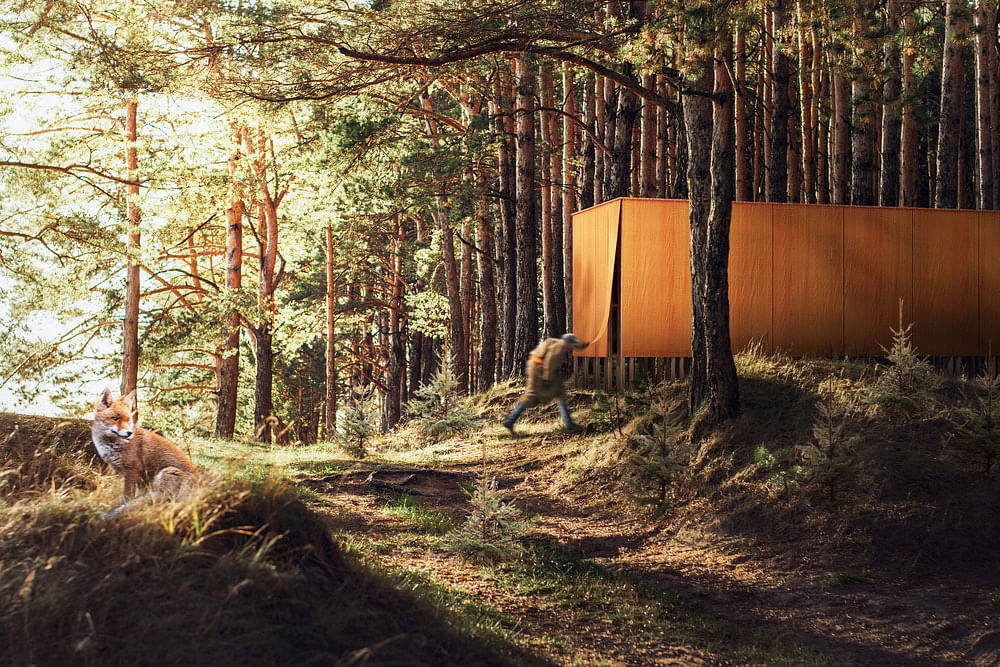
The winning landscape art installations for the 23rd International Garden Festival have been revealed
By Nathaniel Bahadursingh|
Thursday, Feb 17, 2022
Related
The International Garden Festival has announced the five winning installations selected for its 23rd edition. Under the theme “ADAPTATION,” the design teams were chosen by the jury from among 87 projects submitted following an international call for proposals.
The Reford Gardens in Grand-Métis, Québec will open on June 4 and the festival will run from June 25 to October 2, 2022.
Check out the five new installations below:
Lichen
Marie-Pier Gauthier-Manes, product and space designer
Chloé Isaac, graphic designer and ceramicist
Victor Roussel, 3D artist
Paris, France / Montréal, Québec
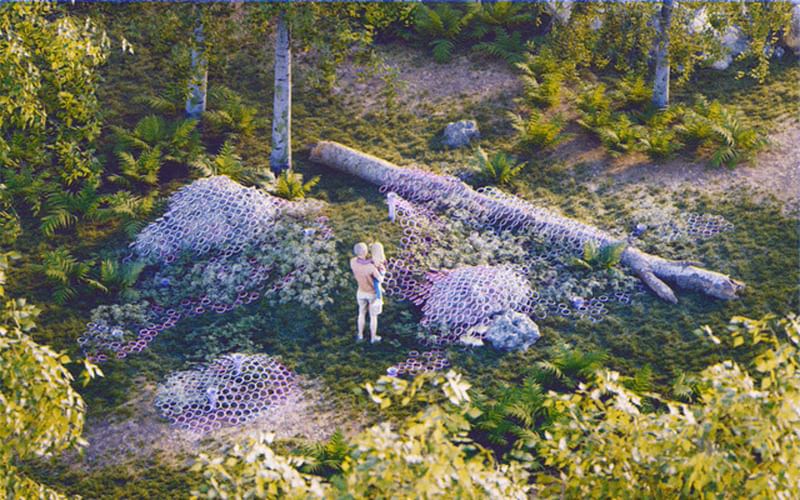
Project summary: "Lichen is a perceptive, malleable and mutable organism. It metamorphoses in contact with the topography, humidity and ambient temperature. Like its namesake, it is sensitive to disturbances in its environment and is therefore a valuable indicator of environmental change. Composed of small, delicate elements, it is nonetheless a cohesive and resistant structure that serves to prepare the ground for other plant species. As we wander between its agglomerations, we observe, otherwise invisible, elements reveal themselves in colourful patterns. Inspired by terracotta pots, real archetypes in gardens, this installation is made of small handmade earthenware rings. The drainage and water retention capabilities of this material allow for both a more constant irrigation of the soil and a longer retention of moisture. This environment allows plants that are particularly sensitive to temperature variations and drought to grow peacefully. Its thermochromic treatment changes its appearance according to the temperature to reveal different colours throughout the summer season."
Forteresses
Eadeh Attarzadeh, urban planner
Lorenzo Saroli Palumbo, architect
Montréal, Québec

Project summary: "The romantic ideology of believing that our forests thrive without human contact or interference has unfortunately been disproved. As long as humanity persists on its present course, it has become unrealistic to expect our forests to defend themselves. Forteresses is an intervention within the forest, symbolizing an aggressive way to protect our flora from its greatest predator: ourselves. These defensive systems will be assembled using wood from trees that have succumbed to their inability to adapt. Concretely, each system, mimicking organic geometries often presented in a simplified manner in nature, is assembled and stacked on site, around three to four trees in the east-west axis of the Festival. The geometry of each modular system adapts to the protected tree, depending on its type, size, and age. Forteresses is meant to be appreciated for the beauty of its geometries in addition to making visitors question the impact they have on their environment and reminding them that our flora is often unable to protect itself."
Forêt finie, espace infini?
Antonin Boulanger Cartier, intern architect
Melaine Niget, urban planner and intern architect
Pierre-Olivier Demeule, intern architect
Québec City, Québec
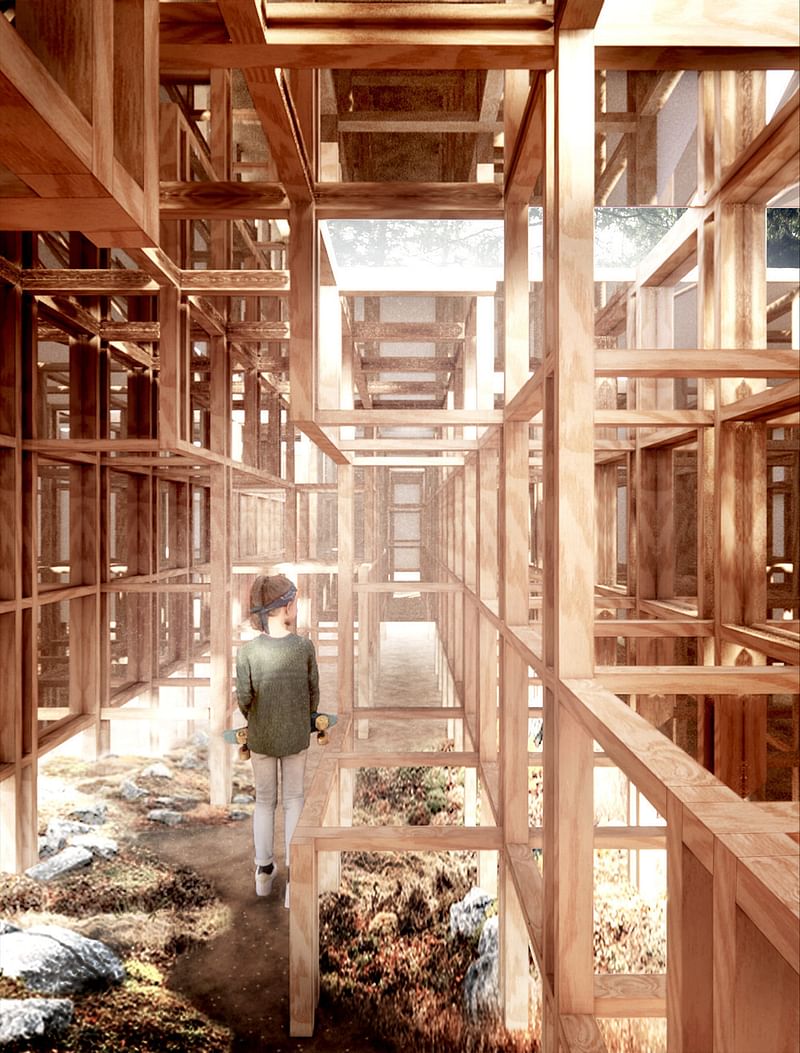
Project summary: "From a distance Forêt finie, espace infini? takes on the appearance of a pile of sawn and dried wood that a carpenter might have placed there while waiting for his next project. This defined form covered with a plastic sheeting waits in the summer heat. Rooted in the middle of a path crossing the boreal forest, the installation however obstructs the passage. Without being able to go around it, is it possible to cross it, to face it seems inevitable. By approaching, a section of the tarpaulin is unhooked and you are invited to slip into it. Inside, a structure made of finely assembled wooden slats reveals a path modulated by a play of solids and voids. Surrounded by mirrors, the space with its elusive limits offers a thousand reflections. What are all these cleverly arranged slats and why do they seek to reach the infinite? Aren't they constrained by this tarpaulin that can be seen from the outside?"
Gravity Field
Theodore Hoerr, Landscape Architect
Kelly Waters, Landscape Designer
Rebecca Shen, Landscape Designer
New York, United States
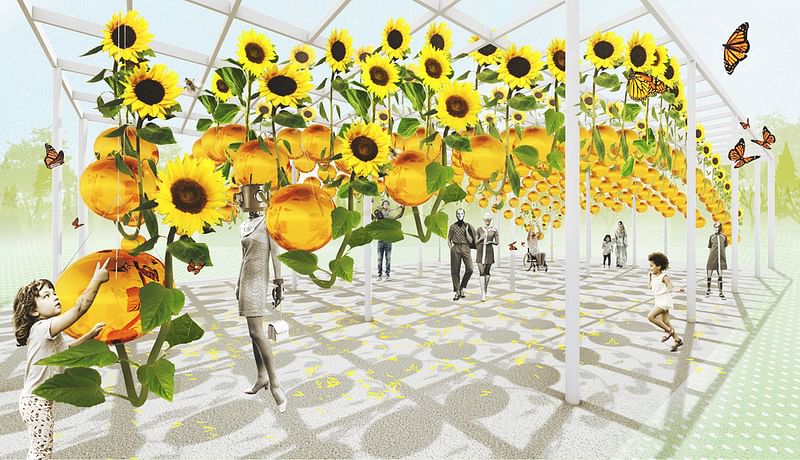
Project Summary: "Plants are extraordinarily adaptive. They have the ability to thrive in some of the harshest environments on earth by responding to a myriad of stimuli - sun, water, temperature, soil, and gravity - to sustain life. Plants are also essential to human existence, providing sustenance, ecosystem services, and carbon sequestration. While they play a key role in mitigating the effects of climate change that threaten our existence as a species, they too are also vulnerable and must adapt quickly to a rapidly changing climate. Gravity Field demonstrates the robust adaptation of plants in even extremely strenuous conditions. A floating cloud of sunflowers will transform during the course of the installation. The sunflowers are initially grown upside-down, but will bend up as they grow towards the sun, defying gravity. Visitors can visit the installation numerous times to experience how adaptable plants are to their circumstances: phototropically, gravitropically, and heliotropically. Gravity Field is an immersive, delightful experience and real time experiment that spotlights the powerful resilience of nature. While the future is uncertain, Gravity Field sees optimism in the ability of plants, and all organisms, to adapt and thrive."
Les huit collines
Noël Picaper, architect
Levallois-Perret, France
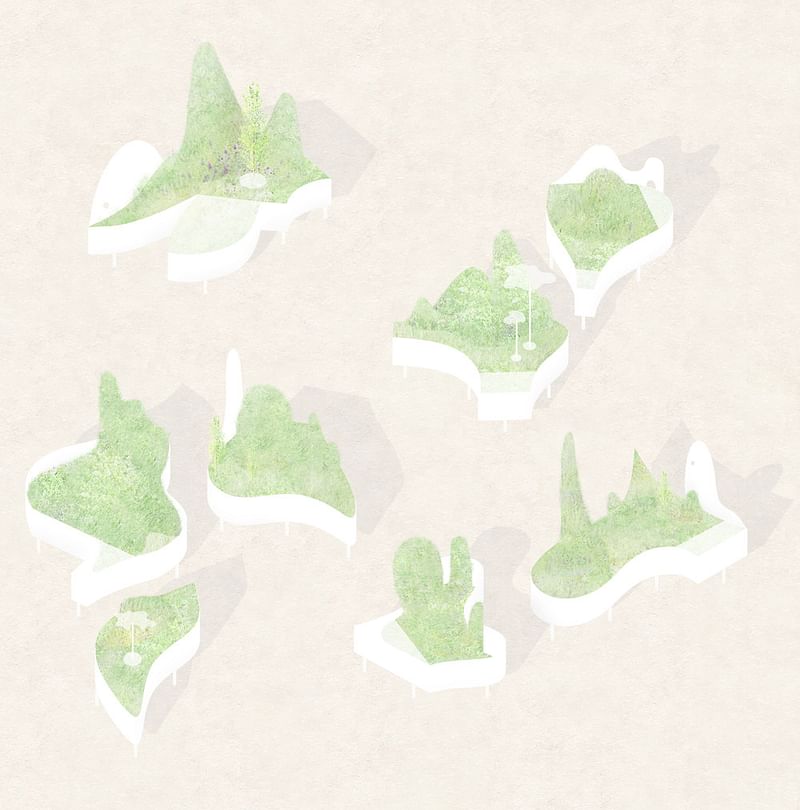
Project summary: "A new adaptable topography seems to have taken up residence in the heart of Les Jardins de Métis. Conceived as evolving structures, those eight hills imagine biological spatialities. Through inanimate and organic materials, they create life effects. Each one functions independently. Once gathered together, like a puzzle, they draw a plant cartography. A hilly landscape then appears, capable of offering various experiences to humans as well as to non-humans (birds in particular). Serving as a seating area, a micro-garden, a contemplative space and an ecological reservoir, this project, by its modularity, will adapt to the different events of the Festival. It will also offer visitors a multitude of spatial sequences to practice, seating, hiding places and amphitheatre and more. Our desire, behind this assembly of surfaces, is to reveal the richness of a whole environment, catalyzing other forms of interactions for various living beings. Dreamlike and supporting functions, this work influences the climate by softening the summer heat with its shades and its flora. Les huit collines thus elaborate a landscape charged with meaning that never ceases to evolve both by its composition and by the cycles of life that it shelters."
The jury also awarded a special mention to The Last Beauty by Hugo Thibodeau (intern architect), Véronique Côté (intern architect), and Maryse Béland (intern architect).

RELATED NEWS Here are the winning landscape art installations for the 2021 International Garden Festival

RELATED NEWS Five landscape art installations selected for 2020 International Garden Festival


Share
0 Comments
Comment as :